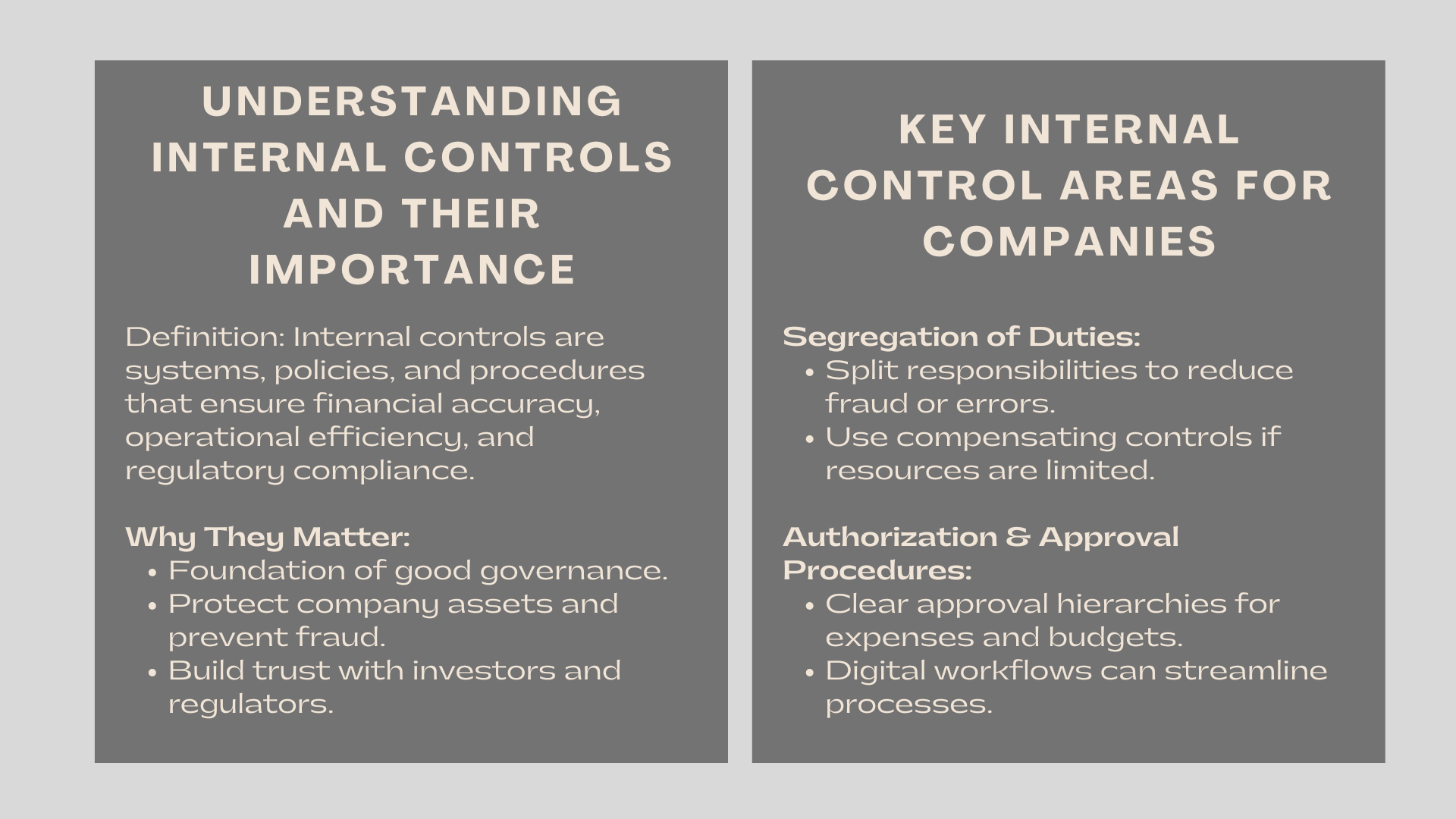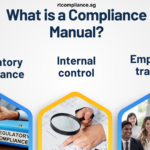Internal Controls Every Singapore Company Should Have
Any successful company in Singapore is based on good internal controls to make sure that it is financially accurate, operational efficient and in compliance with the regulations. The internal controls are the foundations of good governance- to protect the assets of the company, to thwart fraud and to keep the financial reporting intact.
Effective internal controls are a compliance necessity as well as a motivating factor towards the sustainability of the business and the trust of the investors in the case of SMEs. In this article, the author brings out the necessary controls any company in Singapore should possess and the best practices that can be used to enhance the financial management systems, while also aligning with the importance of sustainability in corporate strategy to support long-term growth and stakeholder confidence.

Knowing Internal Controls and their Significance.
What Are Internal Controls?
Internal controls are the systems, policies, and procedures that are meant to provide positive financial reporting, operational efficiency as well as compliance with laws and regulations. These controls can be described as a point of control that helps in identifying and deterring errors, misstatements or fraudulent activities in an organization.
In the case of the Singapore firms, internal controls should be observed effectively to comply with the demands of Accounting and Corporate Regulatory Authority (ACRA) and Inland Revenue Authority of Singapore (IRAS).
The relevance of Internal Controls in SMEs.
Good internal controls minimise financial discipline, promote transparency and accountability. SMEs also tend to have smaller teams making it difficult to segregate duties. Nevertheless, proper checks and balances can be used to protect assets and keep operations running smoothly even in lean systems.
The essential internal control procedures for Singapore companies also improve audit readiness by demonstrating compliance with accounting standards and corporate governance expectations.
Critical Internal Control Areas that a company is supposed to adopt.
Segregation of Duties
An effective internal control framework has segregation of duties that is part of it. It entails splitting of the main duties by the various employees so as to reduce chances of misconduct or fraud. An example is that the individual who approves payment should not be the same person as the one who records transactions or cash.
In the case where a company is too small to completely separate these functions, compensated controls, including management independent review, can still be used to provide an controls check.
Procedures of Authorization and Approval.
All the transactions must be authenticated by authorized personnel appropriately. These are approvals on expense claims, payments on vendors and budget allocations. Accountability and unapproved spending are avoided through clear hierarchies in approval.
SMEs can digitize the approval process with the help of accounting software or workflow systems, which can assist in efficient monitoring of the approvals and audit trails.
Physical and IT Security
Physical controls include limited access to inventory, cash, and sensitive records, which are necessary to secure assets of the company. In the modern digital world, IT security controls such as robust passwords, encryption as well as multi-factor authentication are vital.
Regular renewal of security policies and the support of data help prevent the businesses in case of some breach or data loss.
Monetary Control and Surveillance Systems.
Review and Reconciliation.
Bank accounts, receivables and payables reconciliations are regularly performed to verify the recorded transactions with the actual balances. This is a basic but effective control that is used to detect inconsistencies in their early stages and avoid financial misrepresentations.
A review of financial information by the management on a monthly or quarterly basis also enhances the control and aids in making informed decisions.
Budgeting and Variance Analysis.
Budgets can help businesses to track financial performance by preparing detailed budgets and comparing them to actual results. Major variances are to be enquired immediately in order to know the reasons behind it like excess spending or loss of revenue and corrections to be made.
This type of control assists the SMEs to be financially disciplined and to meet the strategic objectives with regards to spending.
Paperwork and Book keeping.
Effective documentation makes it transparent and facilitates the correctness of financial reports. The system should ensure all invoices, contracts and receipts are properly arranged and stored as required by IRAS.
Digital storage systems reduce the risk of loss or damage of records, and facilitating the storage of records in audits or when an internal review is being conducted.
Enhancing Internal Controls of SMEs.
Training and Awareness
Internal controls are critical in the hands of the employees. Regular training will make them aware of the policies, standards of ethics and reporting of the firm.
The possibility of errors and non-compliance are minimized when staff is aware of possible risks and adheres to the set procedures.
The monitoring and improvement of continuous improvement.
Internal controls are dynamic and are not fixed but they must keep up with the business. Internal audits and management reviews should be performed at least once a month to evaluate the effectiveness of controls and to find the areas to improve.
Implementing the best internal control practices for financial management in SMEs enables companies to adapt quickly to changes in business operations, regulatory requirements, and technological advancements.
Conclusion to Internal Controls Every Singapore Company Should Have
Internal controls that are strong are the basis of financial integrity and operational excellence. It is possible to say that by implementation of the necessary internal control processes in companies operating in Singapore and the adoption of best internal control practices in financial management in SMEs, the business will be able to increase transparency, minimize the risks, and ensure that it does not violate the regulations of the area.
Finally compliance is not enough as regards effective internal controls, but also about fostering trust, sustainability and putting Singapore companies in a competitive environment at a long term edge.




